It’s 1935, and the Japanese colonial government has just opened up Taipei’s first modern public market in the city’s Wanhua District (萬華). And it’s quite an eyeful. Bright and airy, the indoor market appeals with its numerous windows, ventilators and broad courtyard in the center of the U-shaped building. On both sides of the corridor, vendors hawk meat, vegetables, pastries, dining utensils and other goods out of the 30 or so neatly-arranged wooden stands. A shallow gutter runs alongside the corridor, keeping the floor dry and clean.
Fast-forward 80 years, and the Xinfu Market (新富市場), as it is known, had long beem abandoned by tenants and patrons. But the market’s new manager, JUT Foundation for Arts and Architecture (忠泰建築文化藝術基金會), temporarily reopened it to the public, hosting a number of activities such as guided tours, panel discussions, workshops and exhibitions.
A cultural arm of JUT Group (忠泰集團), a major land developer in Taiwan, the foundation’s main undertaking is to revive vacant, deserted spaces in Taipei for cultural usage. Past projects include UrbanCore Arts Block (城中藝術街區), a dilapidated block on Zhonghua Road (中華路) owned by JUT and made available for various art groups between 2010 and 2012.
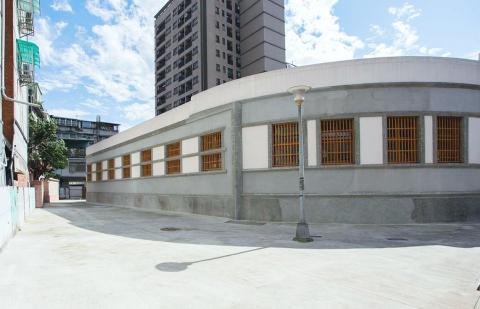
Photo Courtesy of JUT Foundation for Arts and Architecture and Ho Yi, Taipei Times
After the events conclude on June 14, Xinfu will be closed for further renovations that are aimed to “draw young people to the old neighborhood and facilitate exchanges with local residents,” says Ouyang Aining (歐陽藹寧), a senior coordinator at the foundation.
“When a space is no longer needed, it vanishes from the public’s consciousness,” she adds. “Only when the space establishes a connection with people and meets their needs, can there be a possibility for it to thrive.”
DECLINE
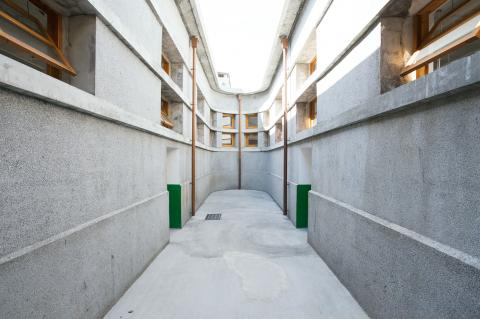
Photo Courtesy of JUT Foundation for Arts and Architecture and Ho Yi, Taipei Times
Xinfu Market enjoyed its heyday in the 1950s, when Taipei’s population exploded following the Chinese Nationalist Party (KMT) regime’s retreat to Taiwan. But the establishment of the nearby Huannan Market (環南市場) in 1978 and the legalization of street vendors in the area adjacent to Xinfu in 1986, now known as East Sanshui Street Market (東三水街市場), took a heavy toll on the business.
During the 1990s, traditional markets lost many of their customers to supermarkets. By this time, Xinfu was mostly being used as a storage and preparation space by the vendors who plied their trade outside the markets walls.
Fortunately, over the decades, the entire one-story building as well as the original wooden stalls and old Japanese dormitory have remained largely intact. In 2006, the Taipei City’s Department of Cultural Affairs designated Xinfu a municipal monument. By the time the city government renovated it in 2012, however, the market was virtually deserted.
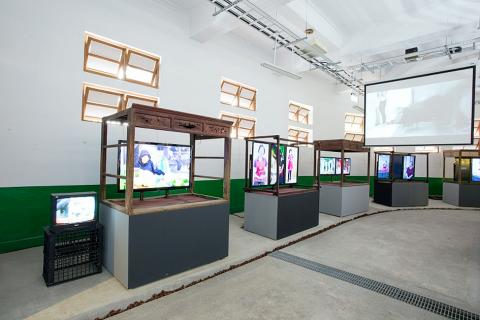
Photo Courtesy of JUT Foundation for Arts and Architecture and Ho Yi, Taipei Times
REVIVAL
Now, a series of large video pieces by artist, curator and scholar Chen Yung-hsien (陳永賢) and his team dominate much of the market’s interior, recounting the personal histories and stories of those who worked there. Last weekend, visitors made ornaments using vegetables and fruits at a workshop held by local business Caketrees Studio (無事文創商號). Taiwan Dream City Building Association (台灣夢想城鄉營造協會), a non-profit organization working closely with the homeless and low-income families in Wanhua, was also invited to share their experiences.
Several other local groups such as Good Home Here (好加在工作室), which specializes in community development, will hold various activities. On June 14, a few local businesses, including Duckstay Hostel (大可居青年旅館) and Waley Art (水谷藝術), will discuss the prospects of reviving the old community of Wanhua through youthful, creative endeavors.
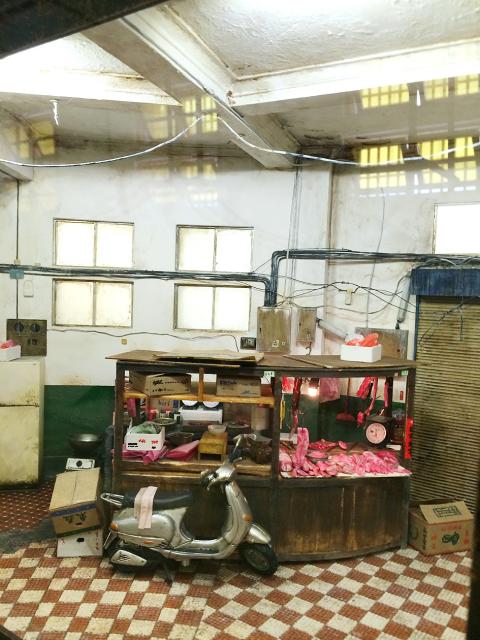
Photo Courtesy of JUT Foundation for Arts and Architecture and Ho Yi, Taipei Times
Ouyang says that an essential goal of the project is forming strong bonds with local residents and community organizations.
“We are an art and architecture foundation, so community development has never been our strong point,” she says. “But Wanhua has such rich cultural resources. We need to preserve them.”
Last year, JUT won the bid to run the market for the next nine years. The new renovation, designed by Japanese architect Go Hasegawa, is scheduled for completion next year. In the near future, Xinfu Market will house a coffee shop, tea house, kitchen and exhibition/performance space. There will also be an archive and library where people can read about the history of Wanhua and the market.
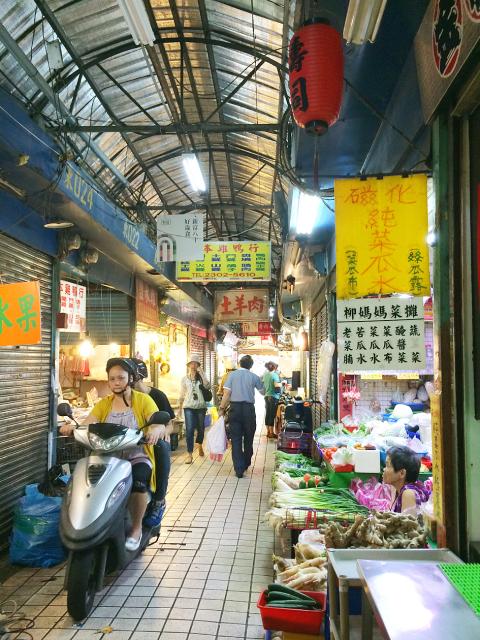
Photo Courtesy of JUT Foundation for Arts and Architecture and Ho Yi, Taipei Times
Ouyang says that although JUT’s contract with the city government is not limited to non-profit usage, they will make sure that everything they do at Xinfu is accessible to the public.
Those interested in learning more about the market’s past, present and the future can take a guided tour, available for groups of 15 to 20. The tour is 50-minute long and conducted in Chinese. Participants must register one week in advance by calling (02) 2562-1617 ex.32 or emailing yellow@jut-arts.org.tw.
Xinfu Market is currently open from 10am to 6pm, closed on Mondays. Take the MRT to Longshan Temple Station (龍山寺捷運站) and take exit No. 3. When outside, turn left and you will see a narrow alley, where the market is located within a one-minute walk. The address is 70, Sanshui St, Taipei City (台北市三水街70號).
All exhibitions and activities are free and run through June 14. For more information, visit www.jut-arts.org.tw and www.facebook.com/JUTfoundation.
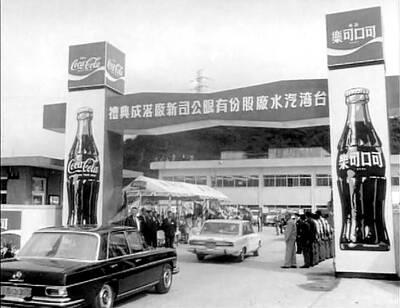
July 28 to Aug. 3 Former president Chiang Kai-shek (蔣介石) reportedly maintained a simple diet and preferred to drink warm water — but one indulgence he enjoyed was a banned drink: Coca-Cola. Although a Coca-Cola plant was built in Taiwan in 1957, It was only allowed to sell to the US military and other American agencies. However, Chiang’s aides recall procuring the soft drink at US military exchange stores, and there’s also records of the Presidential Office ordering in bulk from Hong Kong. By the 1960s, it wasn’t difficult for those with means or connections to obtain Coca-Cola from the
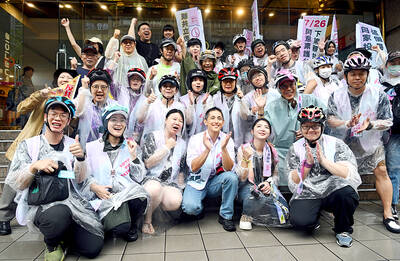
Taiwan is today going to participate in a world-first experiment in democracy. Twenty-four Chinese Nationalist Party (KMT) lawmakers will face a recall vote, with the results determining if they keep their jobs. Some recalls look safe for the incumbents, other lawmakers appear heading for a fall and many could go either way. Predictions on the outcome vary widely, which is unsurprising — this is the first time worldwide a mass recall has ever been attempted at the national level. Even meteorologists are unclear what will happen. As this paper reported, the interactions between tropical storms Francisco and Com-May could lead to
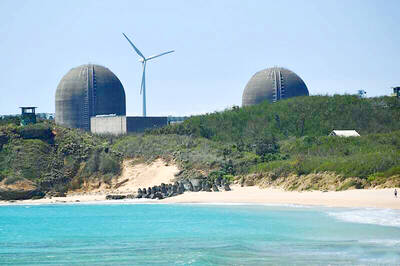
A couple of weeks ago the parties aligned with the People’s Republic of China (PRC), the Chinese Nationalist Party (KMT) and the Taiwan People’s Party (TPP), voted in the legislature to eliminate the subsidy that enables Taiwan Power Co (Taipower) to keep up with its burgeoning debt, and instead pay for universal cash handouts worth NT$10,000. The subsidy would have been NT$100 billion, while the cash handout had a budget of NT$235 billion. The bill mandates that the cash payments must be completed by Oct. 31 of this year. The changes were part of the overall NT$545 billion budget approved
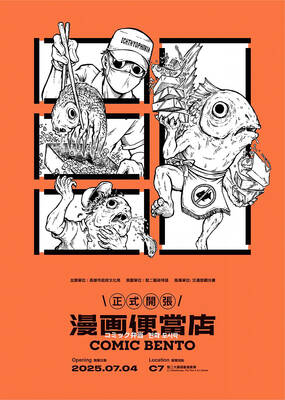
It looks like a restaurant — but it’s food for the mind. Kaohsiung’s Pier-2 Art Center is currently hosting Comic Bento (漫畫便當店), an immersive and quirky exhibition that spotlights Taiwanese comic and animation artists. The entire show is designed like a playful bento shop, where books, plushies and installations are laid out like food offerings — with a much deeper cultural bite. Visitors first enter what looks like a self-service restaurant. Comics, toys and merchandise are displayed buffet-style in trays typically used for lunch servings. Posters on the walls present each comic as a nutritional label for the stories and an ingredient